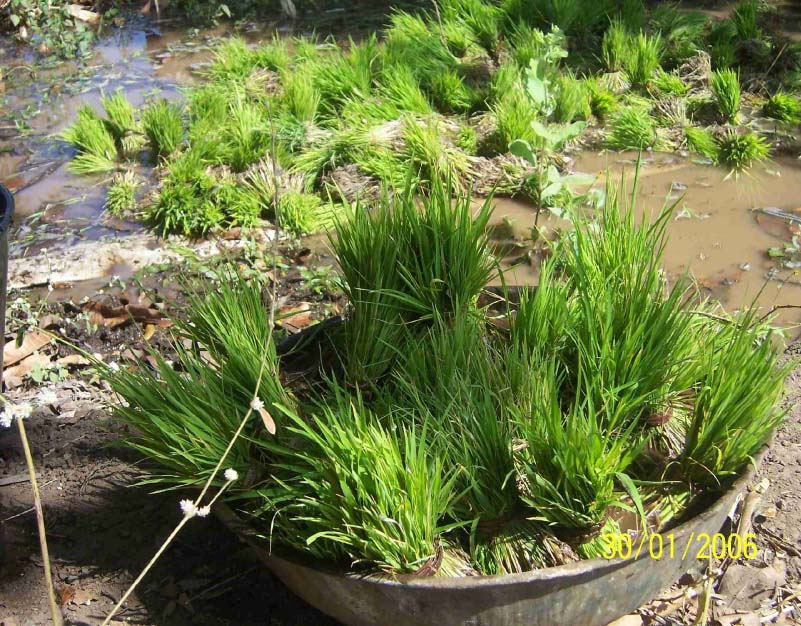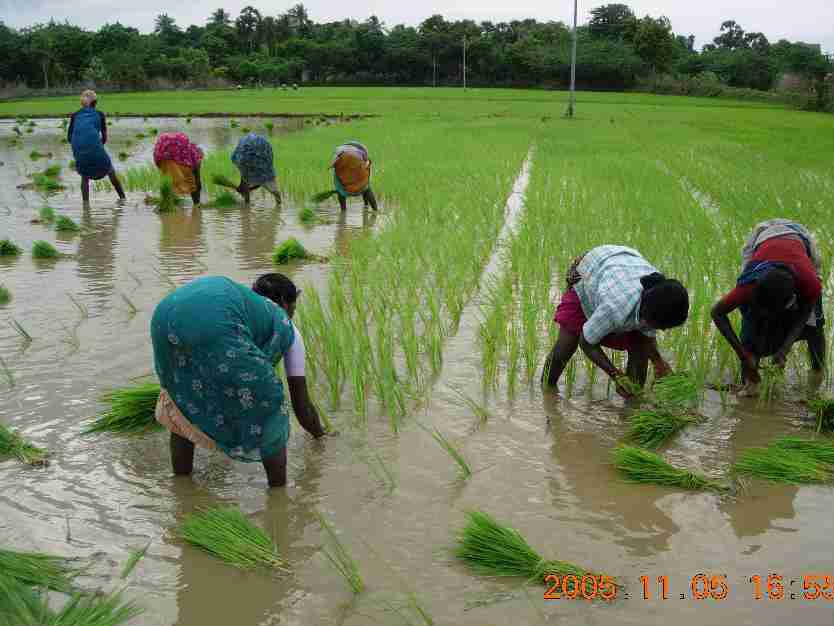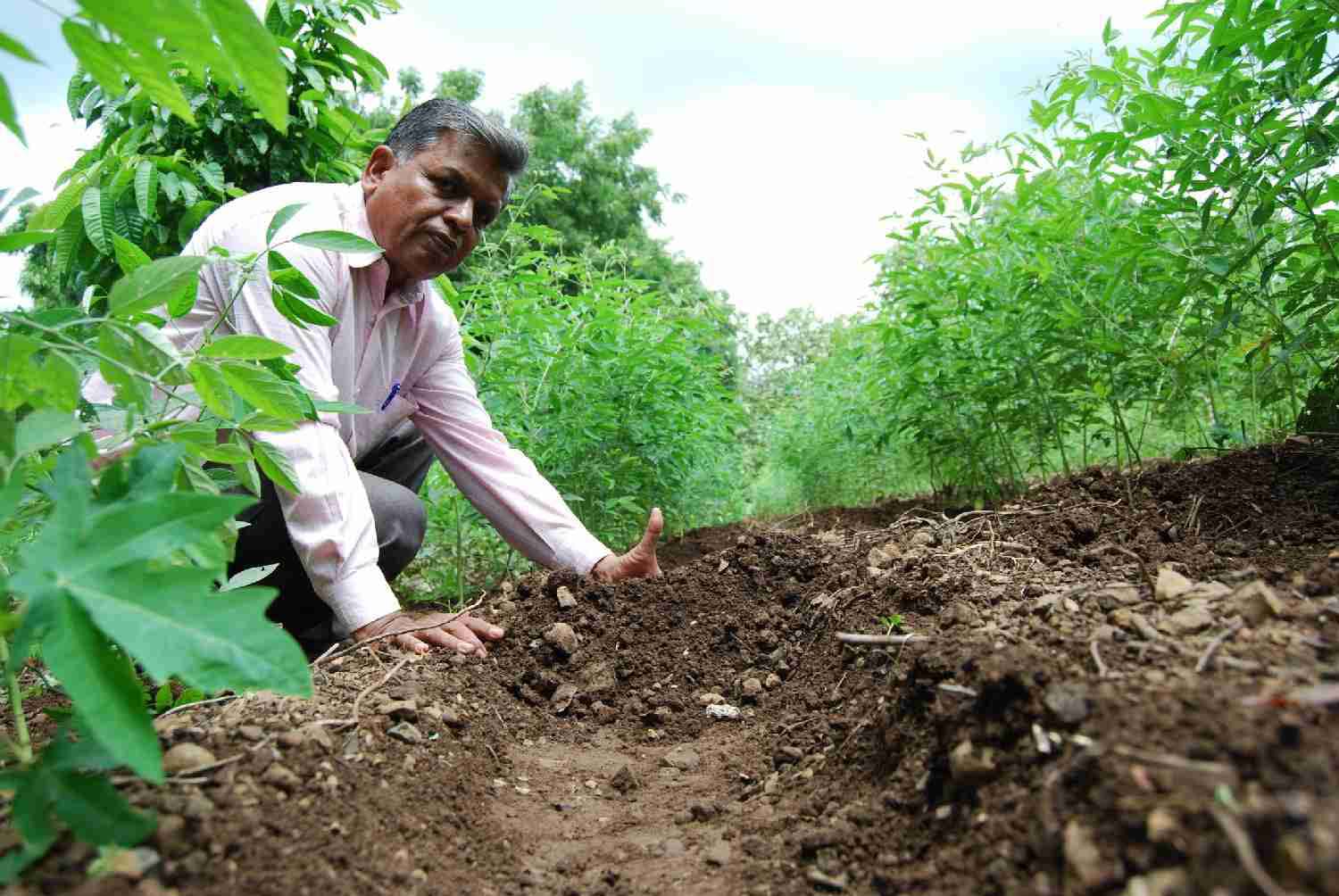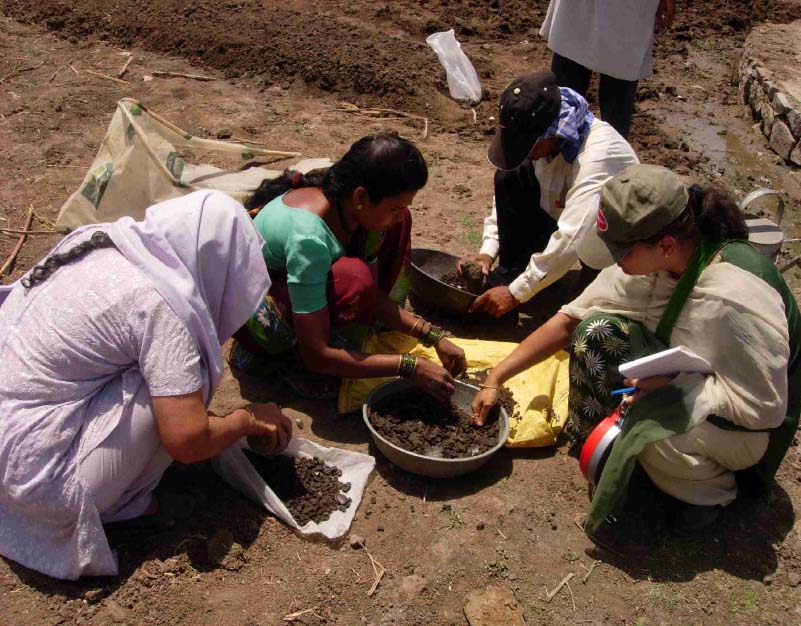 This set of presentations from the conference on Outstanding Organic Agriculture Techniques held during September 2009 at Bangalore provides an introduction to organic farming, and bringing together various issues related to organic farming.
This set of presentations from the conference on Outstanding Organic Agriculture Techniques held during September 2009 at Bangalore provides an introduction to organic farming, and bringing together various issues related to organic farming.
Organic farming can feed the world
This presentation by Claude Alvares, deals with the work of India’s organic farming community and the Organic Farming Association of India (OFAI). It states that the best organic farmers look to the forest for their learning. It details out how one raises plants (or trees) without – (a) NPK (b) Dams and canal irrigation (c) Tractors (d) Pesticides, weedicides, fungicides, homicides (e) Bank credit or bank extension officers (f) Agricultural scientists or universities (g) Negative environmental effects like climate change and (h) Water pollution.
Biodiversity for sustainable & self-reliant farming
This presentation by V Ravi, Tamil Nadu of Farmers Technology Association, Erode indicates how biodiversity is the basis of self reliant farming. Of the 27,000 species of higher plants, about 7,000 species of plants are cultivated in agriculture. Today only 30 species of crops are cultivated, of which wheat, rice and maize alone provide about half of the food all over the world. We have lost many species leading to a breaking of the food web.
Agriculture depends on healthy ecosystems to provide services that include nutrient and waste recycling, pollination from insects, soil erosion control, and clean water. Clearing of native vegetation, doing monoculture causes huge genetic erosion and loss of natural resources. The components of biodiversity cum agro-forestry model farm are: (a) Bamboo - used for various purpose & timber value (b) Glyricidia - nitrogen fixing tree used for green manure & also fodder purpose (c) Pathimugam - wood used for natural dye extraction & water purification.
Our biodiverse farming
This presentation deals with the experiences of Sammamma of Bidakanne village in Medak, Andhra Pradesh, a marginal farmer with poor land with red soil of less than one feet top soil. She grows 15 to 20 crops, mostly food crops in an acre. The diverse foods provide her (a) Nutritious millets (b) Pulses, Oilseeds, Spices (c) Staggered harvest and (d) Early crops – Foxtail millet, Gareeb jonna. It also provides her fodder security, fuel, fibre and fencing material apart from meeting her cash needs. It also helps nurture soils and reduces pest attacks. She concludes with an account of how women have complete control over their seeds, crops and food and have stayed the leaders of the community today.
Growing food on a severely eroded land
This presentation by Deepika, Auroville deals with the challenge of building soil in severely eroded lands as plants need minimum six inches of good soil. The rules for soil building are: (a) no soil from outside (b) no purchased compost/manure (c) biomass grown on the site and (d) resources from the home and surrounding. The process suggested is of: (a) protecting the land (b) creating water bodies/contour bunds (c) establishing vegetation to produce biomass in-situ (d) creating raised beds and (e) building up and maintaining organic matter by creative use of resources.
Revival and re-construction of saline lands by sustainable agriculture techniques
This presentation by Renuka, Tamil Nadu Organic Farmers Movement, deals with its attempts in addressing issues related to salinity such as (a) Increase in soil salinity (b) Reduction in soil permeability (c) Loss of organic content and (d) Less microbial activity. These result in the degradation of physical, chemical and biological properties of the cultivable lands. It explains sustainable farming approaches that have been tried out in disaster situations like post-tsunami saline land reclamation in (a) Nagapattinam, Tamil Nadu, India in 3800 acres, (b) Banda Aceh, Indonesia - 32 islands (c) Ampara, Sri Lanka - 66,000 hectares and (d) Post-AILA land reclamation - 8 islands in Sunderbans, West Bengal, India.
attempts in addressing issues related to salinity such as (a) Increase in soil salinity (b) Reduction in soil permeability (c) Loss of organic content and (d) Less microbial activity. These result in the degradation of physical, chemical and biological properties of the cultivable lands. It explains sustainable farming approaches that have been tried out in disaster situations like post-tsunami saline land reclamation in (a) Nagapattinam, Tamil Nadu, India in 3800 acres, (b) Banda Aceh, Indonesia - 32 islands (c) Ampara, Sri Lanka - 66,000 hectares and (d) Post-AILA land reclamation - 8 islands in Sunderbans, West Bengal, India.
 A visit to Subhash Sharma's organic farm, Chhoti Gujri, Yavatmal,
A visit to Subhash Sharma's organic farm, Chhoti Gujri, Yavatmal,
Maharashtra
This presentation by Sultan Ismail, deals with the experiences of Subhash Sharma of Yavatmal, Maharashtra in organic farming. As he watched the decline of his soil and agricultural yields he let nature be his teacher and tried to understand the agro-economics of agriculture. He abandoned insecticides and chemical fertilisers and relied instead on the cow, trees, birds and vegetation with remarkable results.
Economics of agriculture under natural farming
This paper by Subhash Sharma describes how he understood the agro-economics of natural farming by connecting with the ground reality. He describes his experiences with modern agriculture from 1975 onwards when he started farming like others, applying plenty of chemical fertilizers, poisons and using hybrid seeds. During the initial years, there were indeed bumper crops but that could not be sustained for any length of time. Production from his farm started reducing and the cost of cultivation started rising. Slowly nature became his teacher and taught him the science and economics of agriculture.
This is the only constructive science under which all the constituents of nature get conserved and at the same time shows gradual growth. In chemical intensive agriculture, the growth was the result of killing all others – a violent tendency. In this non-violent regime he could visualize a strong economics which is in the interest of farmers as well as the entire human race. This self-reliance made him return to his power of the soil, water, seeds, environment and labour and gave five avenues of success - 1) Self-reliance of soils; 2) Self-reliance in water; 3) Self-reliance in seeds; 4) Cropping cycle, and 5) Understanding of labour.
Organic farming through green culture - Weeds and mulching
This presentation B N Nandish, deals with his own experiences related to organic farming which he denotes as green culture instead of the usual clean culture. Inspired by Fukuoka he started natural farming of paddy, green gram, arecanut, banana, turmeric, ginger, black gram, mango and coconut in 2000. His farming is characterised by no tillage, manual weeding, manures and bio-pesticides. Over 100 green manures are used along, before and after the crops leading to above average yields.
Innovative package of practices of paddy
This presentation by Pradeep Nikam, begins with an account on preparation of fertile soil, seed treatment and seedling treatment. Seedlings are transplanted in such a way that only root part of the seedling goes in the soil & not the white portion above the roots as white portion controls tilling material. The growth stages & action plan of organic cultivation practices of paddy crop are presented based on the learnings of Gramin Arogya & Vikas Prakalp (Village health and development program).
Download all the 9 presentations: